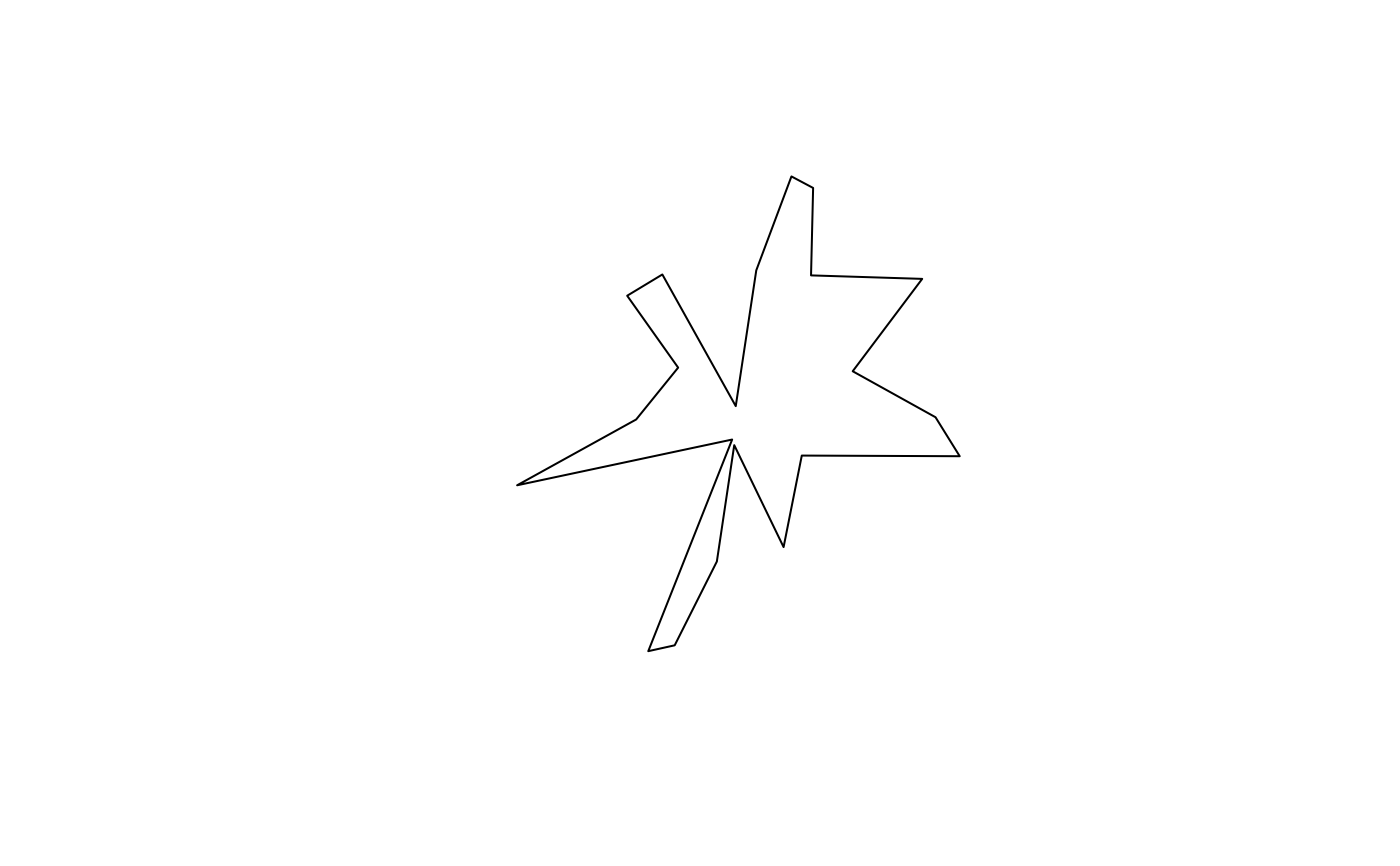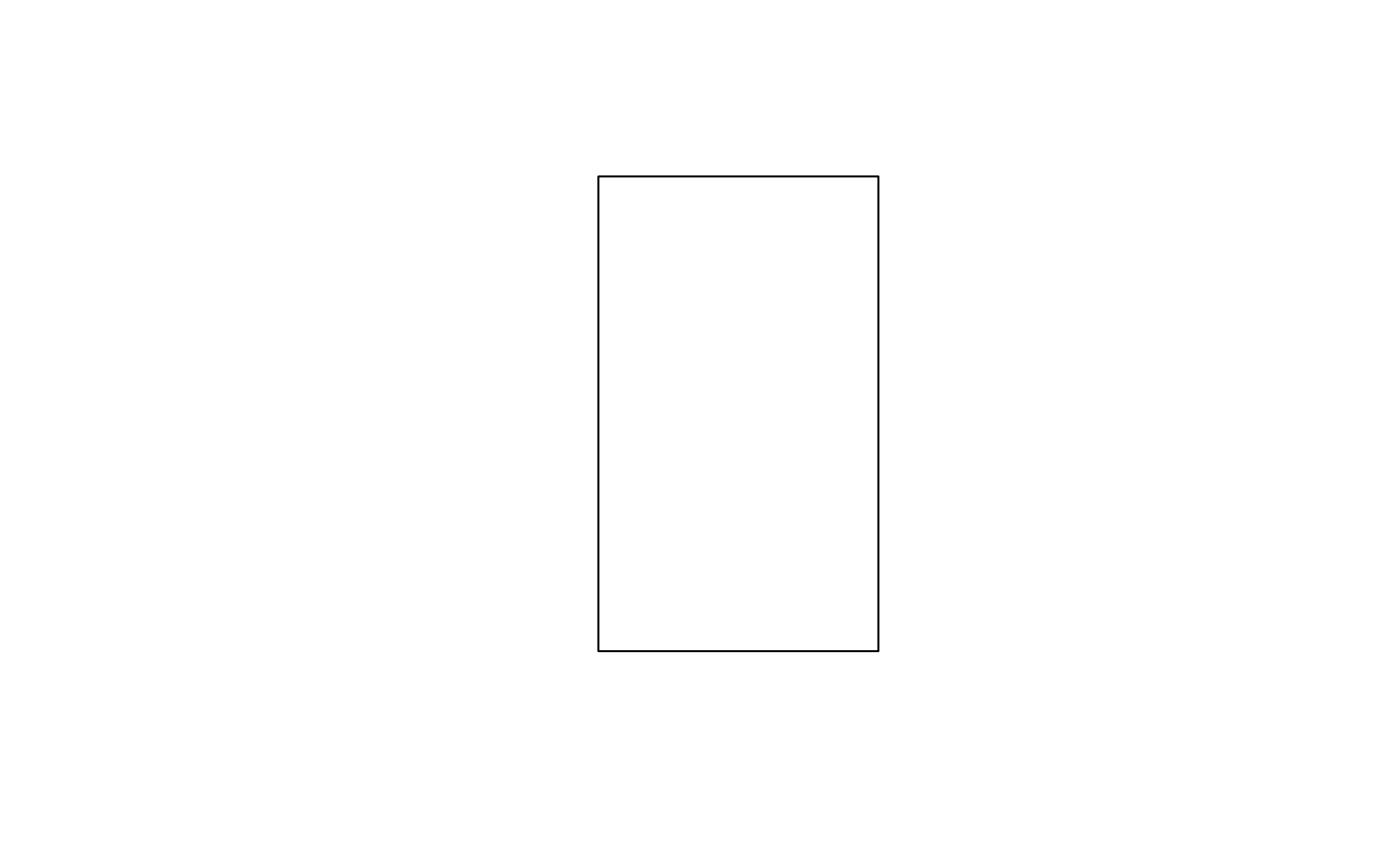
Remove features or portions of features that fall outside a clipping area.
Source:R/clip_erase.R
ms_clip.RdRemoves portions of the target layer that fall outside the clipping layer or bounding box.
Arguments
- target
the target layer from which to remove portions. One of:
geo_jsonorcharacterpoints, lines, or polygons;SpatialPolygons,SpatialLines,SpatialPoints;sforsfcpoints, lines, or polygons object
- clip
the clipping layer (polygon). One of:
geo_jsonorcharacterpolygons;SpatialPolygons*;sforsfcpolygons object
- bbox
supply a bounding box instead of a clipping layer to extract from the target layer. Supply as a numeric vector:
c(minX, minY, maxX, maxY).- remove_slivers
Remove tiny sliver polygons created by clipping. (Default
FALSE)- ...
Arguments passed on to
apply_mapshaper_commandsforce_FCshould the output be forced to be a FeatureCollection (or sf object or Spatial*DataFrame) even if there are no attributes? Default
TRUE. If FALSE and there are no attributes associated with the geometries, a GeometryCollection (or Spatial object with no dataframe, or sfc) will be output.sysShould the system mapshaper be used instead of the bundled mapshaper? Gives better performance on large files. Requires the mapshaper node package to be installed and on the PATH.
sys_memHow much memory (in GB) should be allocated if using the system mapshaper (
sys = TRUE)? Default 8. Ignored ifsys = FALSE. This can also be set globally with the option"mapshaper.sys_mem"quietIf
sys = TRUE, should the mapshaper messages be silenced? DefaultFALSE. This can also be set globally with the option"mapshaper.sys_quiet"gj2008Generate output that is consistent with the pre-RFC 7946 GeoJSON spec (dating to 2008). Polygon rings are CW and holes are CCW, which is the opposite of the default RFC 7946-compatible output. This should be rarely needed, though may be useful when preparing data for D3-based data visualizations (such as
plotly::plot_ly()). DefaultFALSE
Examples
if (rmapshaper:::v8_version() >= "6") {
library(geojsonsf, quietly = TRUE)
library(sf)
poly <- structure("{\"type\":\"FeatureCollection\",
\"features\":[{\"type\":\"Feature\",\"properties\":{},
\"geometry\":{\"type\":\"Polygon\",\"coordinates\":
[[[52.8658,-44.7219],[53.7702,-40.4873],[55.3204,-37.5579],
[56.2757,-37.917],[56.184,-40.6443],[61.0835,-40.7529],
[58.0202,-43.634],[61.6699,-45.0678],[62.737,-46.2841],
[55.7763,-46.2637],[54.9742,-49.1184],[52.799,-45.9386],
[52.0329,-49.5677],[50.1747,-52.1814],[49.0098,-52.3641],
[52.7068,-45.7639],[43.2278,-47.1908],[48.4755,-45.1388],
[50.327,-43.5207],[48.0804,-41.2784],[49.6307,-40.6159],
[52.8658,-44.7219]]]}}]}", class = c("geojson", "json"))
poly <- geojson_sf(poly)
plot(poly)
clip_poly <- structure('{
"type": "Feature",
"properties": {},
"geometry": {
"type": "Polygon",
"coordinates": [
[
[51, -40],
[55, -40],
[55, -45],
[51, -45],
[51, -40]
]
]
}
}', class = c("geojson", "json"))
clip_poly <- geojson_sf(clip_poly)
plot(clip_poly)
out <- ms_clip(poly, clip_poly)
plot(out, add = TRUE)
}
#> Linking to GEOS 3.12.1, GDAL 3.8.4, PROJ 9.4.0; sf_use_s2() is TRUE

